CHICHEN ITZÁ
Archaeological Site of CHICHEN ITZA
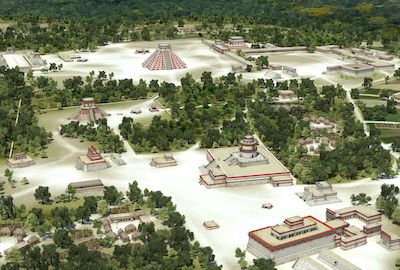
Chi-ch ‘en ltzá’ (the city on the edge of the well of the Itza), was the most important regional capital of the Mayan area in the years 750 to 1200 AD, a bridge between the Mesoamerican Classic and Postclassic periods.
His remains, still well preserved, confirm the fame assigned to him by the chronicles and indigenous legends of Yucatan. Its vestiges show that the traditional Mayan civilization was enriched with other cultural currents of Mesoamerica.
The archaeological site is in the north-central part of the Yucatan peninsula; It is located 120 km from the city of Mérida, Yucatán, and its access is by federal highway no. 180.
According to ceramic evidence, there was human occupation in the Chichén ltzá region from the Upper Preclassic to the last millennium before our era. But it was until the end of the Classic and early Postclassic when the site acquired the proportions and urban characteristics that we admire today.
The first buildings were erected following the Puuc architectural style, characteristic of the thriving Mayan cities of Uxmal, Kabah and Sayil, which were established in the range of the same name. In most of them the Puuc style marks its peak, but also its final flowering.
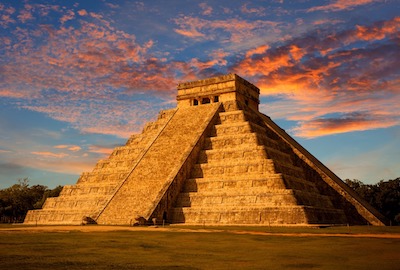
However, in Chichén ltzá a style of its own was developed, which integrated, on the basis of the Puuc, concepts, forms and images from other areas of Mexico, especially from the Gulf coast and the central highlands, since with the distant TuJa, Capital of the historic Toltecs (in the current state of Hidalgo) the closest relationships were found in the areas of planning, architectural style and iconography.
There is also a Mexican or Mayan-Toltec style of Chichen ltzá. Unfortunately, much data is lacking to better explain and date the evolution of the different periods. The cultural model developed in Chichén ltzá seems to have been quite successful and flexible, for this reason it was able to maintain power in the region for a long time and control events in Yucatán.
Military might (frequently expressed in pictorial representations of the site), control of trade routes, exploitation of salt in the north, and rich agricultural areas in the south, may have formed its basic material elements, supported also by the ideological factor of the possession of the Sacred Cenote, entrance to the underworld of the Mayans. The decline of Chichén ltzá is related to the emergence of Mayapán as the new center of power in Yucatán.
Since the 13th century, the inhabited part of the city was very small. In the 16th century, El Castillo and the Sacred Cenote still functioned as stages for large processions that consulted their oracle; however, the large buildings were no longer maintained.
However, a nearby town, of the lineage of the Cupules, rejected a first Hispanic attempt to establish their colonial capital in the ruins, taking advantage of the immense symbolic value that this would have had for the conquest; possibly it was the town of Pisté that still has a Mayan population and is settled in the western part of Chichén ltzá.
Site Description
The Chichen ltzá site covers about 15 km2; most of the structures are distributed over a system of large levels and squares in the central part. They are constructions that show numerous changes and remodeling during their use. To the huge terrace dominated by El Castillo and the so-called Patio de las Mil Columnas (Patio of a Thousand Columns) follow, to the south, the Platform of the Osario and the great Plaza de las Monjas y el Caracol. Minor groups of monumental architecture are distributed in a distance of 200 to 700 meters.
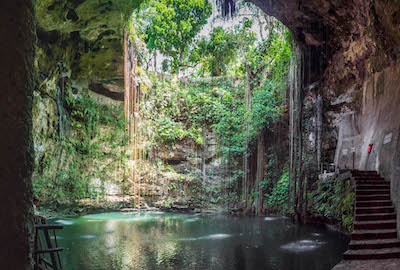
El Castillo (The Castle)
It is a stepped pyramid of nine bodies with a staircase on each of its four sides; these lead to a temple, built on the upper platform, which presents a central sanctuary with two interior pillars, surrounded by a gallery. Inside the Castle has an earlier construction stage that has a frieze with representations of jaguars, a sculpture of Chac Mool and the jaguar throne, painted bright red and inlaid with jade and shell.
Access to this structure is through a modern tunnel, excavated over the original staircase. Possibly, El Castillo was dedicated to the cult of Kukulcán, since due to its orientation, the days of the spring and autumn equinoxes, a succession of triangles is drawn on one of the lateral walls of the alfarda, and through a play of light and shadow, a succession of triangles that simulates the body of a snake.
El Gran Juego de Pelota (Great Ball Court Game)
It is located in the northwest corner of the plaza. Seen from the inside, it consists of two high and parallel walls in the center of which are embedded two stone rings and some benches adorned with bas-reliefs. At each end of the court stands a temple or tribune.
On the east wall, the Temple of the Jaguars is located, at the back of which there is a fully sculpted chamber; In it, polychrome representations of warriors, priests and a multitude of animals and aquatic plants are observed, which suggests that the ball game, in addition to being a sporting event, also had a religious character.
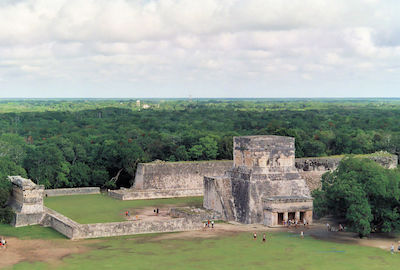
Tzompantli
The reliefs that cover the enormous Tzompantli, ‘Platform of the skulls’, are of the Mayan-Toltec style. Next to it there are two small platforms (located to the north of El Castillo) that of Jaguares and Águilas and that of the planet Venus, which marks the beginning of the road to the Sacred Cenote or the Sacrifices.
The Cenote
It is almost circular, it is 60 m in diameter; the straight walls are about 22m high. It was the deposit of numerous offerings of ceramics, stone, metal, textiles, wood, etc., since the cenote was used for ritual purposes. The Mayans believed that the rain gods lived here and made sacrifices and offerings.
The remains of human sacrifices are striking, but their number is very small if one considers the duration of the Cenote cult. On the southern shore of the river there are the remains of a construction that looks like a steam bath that was used for purification rites.
The Market
In this building the Mayan builders installed the portico with the widest and longest vault and the tallest columns in the area. It is also worth a visit to the Steam Bath, a construction that shows the architectural principles of the Mayan vault.
Temple of the Warriors
It is part of the so-called Set of the Thousand Columns. It sits in a pyramid-shaped building; Its portico is made up of two columns that look like snakes; Its façade is decorated with masks and, in its lower part, it combines an enormous colonnade that serves as a portico and a passage for the main staircase.
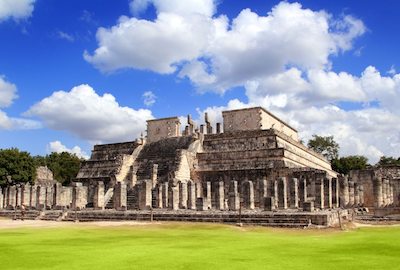
Its name is derived from the multitude of characters, mostly armed, that are represented on pillars, columns and stools. The polychrome finish of these relieves is preserved in some places, but especially in another previous building, the Temple of Chac Mool, enclosed within the general structure.
The Snail
Named for a spiral staircase found in its interior, it has also been named The Observatory, since it is possible that this building, round and erected on two rectangular platforms with different orientation, has served to fix astronomical observations. It should be noted that its exterior facade is adorned with masks and human figures surrounded by feathers. Its current appearance is the result of at least six renovations. Several constructions were added to it on the south side, among them cisterns, a steam bath, and an arch, above the sacbé.
Templo de los Tableros (Temple of the Tablets)
It is a small version of the Temple of the Warriors, with a colonnaded portico and a temple raised on the base. It is named for two sculpted paintings that show mythological scenes, with characters, birds, snakes and trees.
Akabdzib
On the other side of a ravine stands the wide and heavy building called Akabdzíb, which means ‘writing in the dark‘. Notable for a lintel engraved on an interior door, in which a character is represented seated on a throne and surrounded by hieroglyphics, from which the name that has been given to the building is derived. It also stands out for a massive rear attachment that probably should have served as the base for a second floor that was never built.
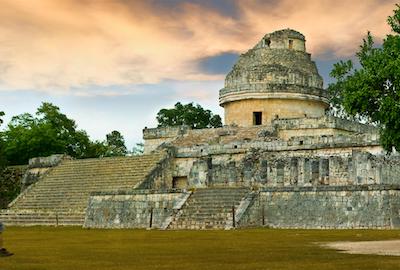
Las Monjas Complex
This complex is the southern end of the great square in the center. It is the end result of a long series of extensions. Probably its name is due to the fact that the buildings, of numerous rooms, reminded the Spanish of their conventions. The current form is a three-story complex that shows the superposition of the Mayan-Toltec style on the Puuc and the combination of the two, around its patios.
It is recommended to visit the second floor, on which there are long inscriptions on lintels, and a magnificent view of the site and its surroundings. Adjoining this complex is a small building, called La Iglesia, which is distinguished by its ornate decoration on the facade, which integrates geometric elements and deities. It also has a high cresting.
With the exception of the group located in the south, the rest of the monumental architecture is not enabled for your visit. To the south zone, also called Chichén Viejo, belong the Group of the Initial Series, the Group of the Old Castle and the Group of Three and Four Lintels.
Map of CHICHEN ITZA
More Tourist Attractions in YUCATAN
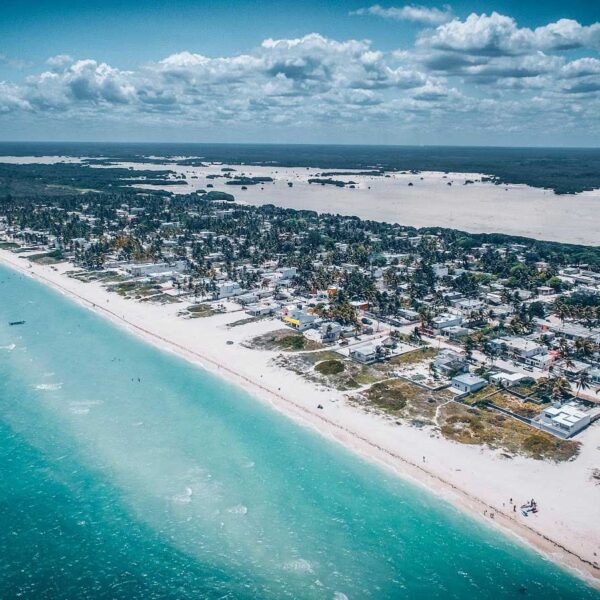
Beaches in Yucatan
There is a wide variety of beaches in Yucatan, ranging from Progreso, which is only 20 minutes from Merida, to more distant beaches such as San Felipe. They all offer a peaceful environment where you can relax, camp and enjoy nature, or practice various sports such as fishing, kayaking, SUP and many other water activities. Among the options that Yucatan offers, there are some that are true paradises such as Celestún and Río Lagartos where the sky is painted pink because they are the habitat of important colonies of pink flamingos. Most of them are wide white sand beaches and in several you can savor some of the delicious typical dishes of Yucatan.… Read More
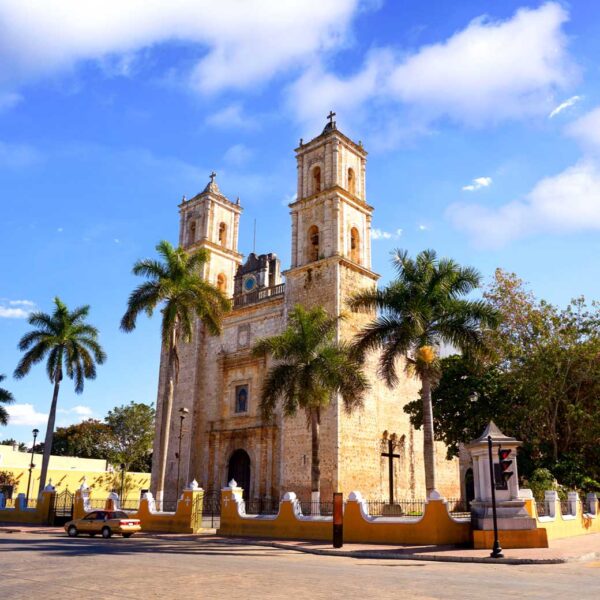
Magical Towns in Yucatan
Yucatán is a region of the country that protects great natural and cultural treasures that are very important to the country, two places that perfectly exemplify the importance of Yucatán in the history of Mexico are its magical towns, Izamal and Valladolid, two destinations that in its streets they protect all the magic of Yucatan.… Read More
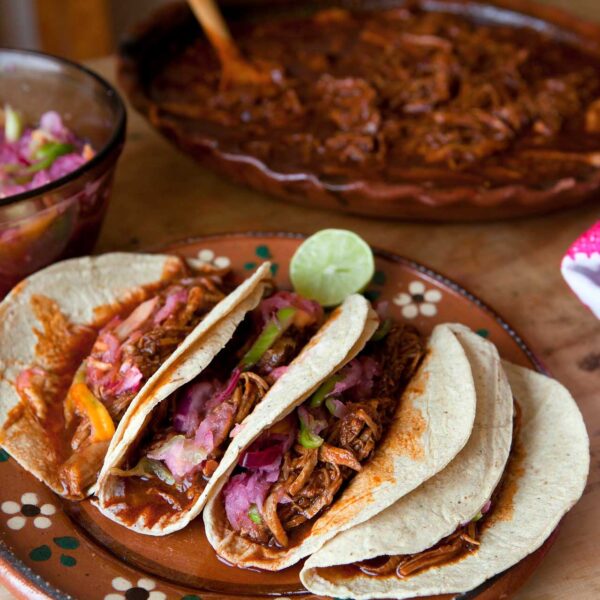
Gastronomy of Yucatan
The gastronomy of Yucatan has its origins in the traditional cuisine of the Mayans with some Spanish ingredients. Its dishes are well known for their particular aroma and flavor, because they are prepared with condiments such as oregano, sour orange, coriander and mainly different types of chili. Other ingredients are the famous “recados”, which are a kind of pasta with which a very characteristic flavor is given to meats, such as the black “recados” or the red “recados”, among others. The “recados” are simply various species of condiments and ground and mixed chilies that form a paste, and that are the main base of many Yucatecan dishes. So in addition to a trip through the incredible jungle landscapes of Yucatan, the cenotes, the archaeological sites, cities and towns, you should enjoy a whole gastronomic trip through the beautiful land of the Mayans.… Read More
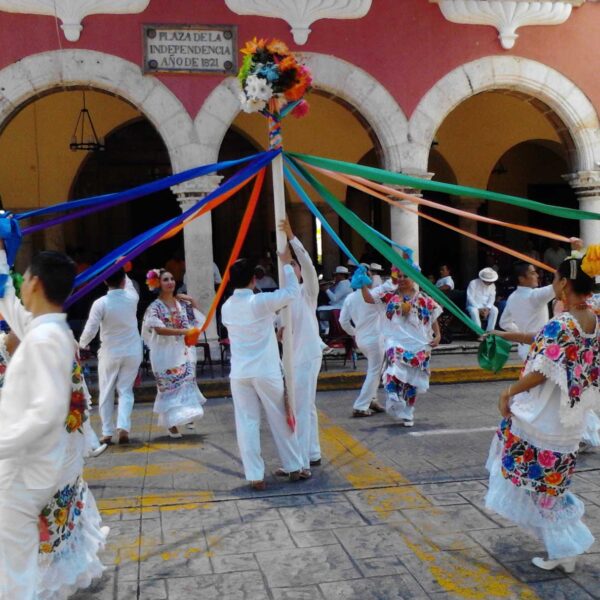
Traditions of Yucatan
The people from Yucatan integrate their beliefs, celebrations and ancient customs into their daily lives, and create a very special kind of magical syncretism. The handcrafts, the cuisine, the music, the folklore, and the traditions are irrefutable proof that Yucatan is a magic land with open, warm atmosphere, where visitors always feel welcome.… Read More
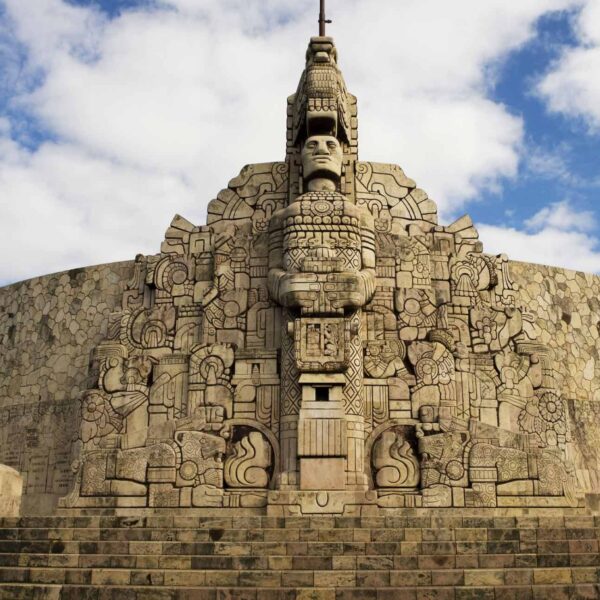
Merida
Merida is one of Mexico’s most important colonial cities, an architectural jewel traditionally known as “La Ciudad Blanca” (The White City). The Mayan World with the generous hospitality of its people surrounds it. It features traditional neighborhoods, tree-lined stately avenues, world class services, varied cuisine, night life and modern installations which guarantee your business success as well as an indelible memory of a unique experience. Mérida has become the “Medical Capital of the South-east Mexico” with a vast network of hospitals, clinics, laboratories as well as private and public doctor’s offices; the health care in the city is excellent and very affordable. Many doctors are English-speaking, often having done their training in the United States; the facilities are state of the art but cost less.… Read More
Guided Tours in CHICHEN ITZÁ
Flights & Hotels in YUCATAN
More Tourist Attractions in MEXICO

Archaeological Sites
The Archaeological Zones are the cultural past of every Mexican. You will be amazed at the ambient, nature and the environment that surrounds them. Climbing to the top or being around it will take us back in time to admire every detail. México is a country of culture and traditions, many of which we have inherited from the pre-Hispanic inhabitants of this vast territory, although it is true that there were more settlements in the central and southern part of the country, it is also possible to find some archaeological remains in the north.
… Read More

Traditions in Mexico
It is practically impossible to make a meticulous, and above all, accurate selection of the places to visit in Mexico. Each place that our country houses is unique and beautiful in its own way. Mexico, with its nearly 2 million km², has a large number of scenarios to offer, as well as endless activities to do. Do not lose your way and enter the places to visit in Mexico. In Mexico, apart from the beaches and its famous archaeological sites, there are many other really interesting sites and activities that you should know. In the surroundings of the main cities you will find places full of culture and tradition, where you can spend relaxing, interesting and fun vacations. On your trip through Mexico you cannot stop obtaining souvenirs, the crafts that are made here are of the highest quality and recognized worldwide. A shopping tour cannot be missed.… Read More

Ecotourism and Adventure
Mexico is one of the best countries for Ecotourism as it has a great variety of flora and fauna, as well as a large number of refuges for extraordinary species. You can enjoy recreational activities of appreciation and knowledge of nature through contact with it, such as: stargazing, observation of natural attractions, wildlife and bird watching. Throughout México there are more than 176 protected natural areas, 5 of them considered by UNESCO as Natural Heritage of Humanity. Just for this and much more, we believe that Mexico is a Paradise for Ecotourism.… Read More

Gastronomy
The Gastronomy of Mexico has a great diversity of typical dishes, which is why it was recognized by UNESCO as Intangible Heritage of Humanity. The basic and representative ingredients of Mexican dishes are: corn, coriander, chili, beans, piloncillo, nopal and tomato. Mexican cuisine is also characterized by its sauces, which serve as an accompaniment to traditional dishes, prepared based on spices.… Read More

Beaches
On the Beaches of Mexico you can immerse yourself in the intense blue ocean of the Pacific bays, sunbathe on the shore of the warm and transparent waves of the Caribbean Sea in Quintana Roo or even rest on the beautiful coasts of the Gulf of Mexico. Mexican beaches hide wonderful secrets for the traveler. By visiting them, in addition to enjoying the excellent climate and water activities, you can discover splendid archaeological sites and interesting colonial cities without traveling long distances.… Read More

States Of Mexico
Mexico has an incredible diversity of landscapes, where the beauty of its beaches, internationally recognized, stands out. In its vast territory of coasts, there are beaches of unparalleled beauty, and colorful landscapes. A large network of first-class hotels and tourist services is available to visitors to these beaches. Mexico is also mystical places, dotted with archaeological testimonies inherited from its original inhabitants. Monuments made by the Mayas, Aztecs and Toltecs are located in magical landscapes, like lighthouses in an ocean of natural beauty. They offer visitors buildings that tell their history, and museums that collect their cultural heritage. And that keep alive ancestral traditions, in ceremonies and festivals, where you can enjoy cultural activities and entertainment.… Read More

Capital Cities
Folklore, gastronomy, literary culture, art and exhibitions, is what you will find in the capitals of the states of Mexico. To the north, colonial Mexico, Puebla, Guadalajara, Guanajuato, the Sonoran desert and the California peninsula. To the east Veracruz and the gulf. To the west Acapulco, Oaxaca and Tuxtla Gutiérrez. And to the south the Riviera Maya and the pyramids of Chichén-Itzá, Tulúm and Cobá in Yucatán, Palenque in Chiapas, the cenotes, and the Central American jungles.… Read More

Magical Towns
A Magical Town is a place with symbols and legends, towns with history that in many cases have been the scene of transcendent events for our country, they are places that show the national identity in each of its corners, with a magic that emanates from its attractions ; visiting them is an opportunity to discover the charm of Mexico. The Magical Towns Program contributes to revalue a set of populations in the country that have always been in the collective imagination of the nation and that represent fresh and varied alternatives for national and foreign visitors. A town that through time and in the face of modernity, has conserved, valued and defended its historical, cultural and natural heritage; and manifests it in various expressions through its tangible and intangible heritage. A Magical Town is a town that has unique, symbolic attributes, authentic stories, transcendent events, everyday life, which means a great opportunity for tourist use, taking into account the motivations and needs of travelers.… Read More

